Livintwist Talks New Products, Catalogue Improvement, and Eco-Friendly Design Dome Select Booth
—“We’re trying to be closer to nature.”
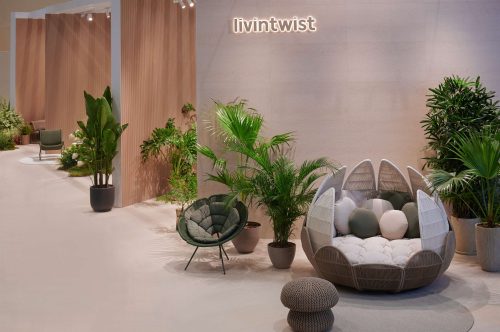
Hong Kong outdoor furniture brand Livintwist revisited Shenzhen for its second SZCW participation this past May. The centerpiece this year was the “Apsaras”, a new seating set by designer Zeng Jinghua, which will be available for order within the next couple of months. First created in 2022 during Zeng Jinghua’s collaboration with one of SZCW’s main highlights, Creacioun, the green set draws inspiration from the headpiece of the flying Apsaras—the celestial beings in the Hindu and Buddhist cultures—as seen in the cave temple paintings in the ancient Chinese town of Dunhuang.
Also showcasing two new series by Frank Chou, the “Space” and the “Sketch”, Livintwist’s cozy and inviting exhibit marked a significant catalogue expansion. But beyond that, it also signified the brand’s development in other ways. “Between last year and this year, we’ve learned how to do things a bit more maturely and with a clearer direction,” said JC, founder of Livintwist.
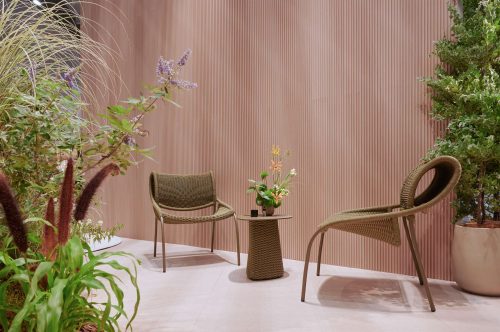
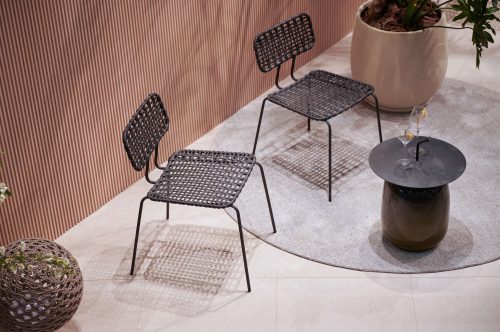
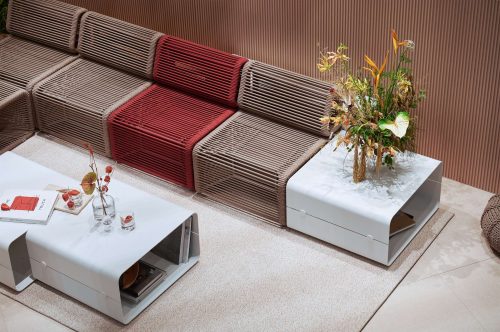

It's been almost a year since we last spoke. What has Livintwist been up to? Any exciting projects and new products?
JC: We actually did a lot of crossover projects with IAD, the Italian design community. And we also did another event during the Milan Design Week. Other than that, we developed new collections. Basically very busy, because there are a lot of tasks to complete within such a short time, as usual. But I believe we have found a more consistent, mature way to present our messages and products. I mean, it’s been quite a few years already, but we found that between last year and this year, we have learned how to do things a little bit more maturely, with a clearer direction.
What are you trying to convey through this exhibition?
JC: First of all, we would like to show what we have achieved so far. Especially with the new collections, I think it’s really something different and unique. We never had any collection that had much of Oriental touch before. And in terms of color and decorations, I think we also achieved a lot through team effort. It’s not just one person’s job. So I’m grateful to everybody who participated in the project.
Zeng Jinghua: I participated in the exhibition design and arrangements this year for this booth, and we also want to convey that we’re trying to be closer to nature. As you can see, we have built up some landscapes, as well as color arrangements that try to make people feel comfortable and closer to nature. That’s what Livintwist has always wanted to pursue, but this year it’s more obvious. We are trying to find a balance between the commercial aspect and our natural feelings this year.
You designed this new collection (the “Apsaras”). Tell us about it.
Zeng Jinghua: There’s a place in China called Dunhuang where you can see paintings of the Apsaras in the caves. They originally came from India but then were spread in China—and can also be found in Buddhism. You can see the hair decoration here—that’s where the inspiration came from. It’s not so normal in the modern days, but very popular during that time in China, around Tang Dynasty.
I’m quite interested in ancient Chinese things, and I also wrote calligraphy when I was a child. So it didn’t take long for me just to draw the outline of this chair on paper. But the real challenge is transforming the sketch into a product. That took quite a long time, over a year, between the draft and the finished product.
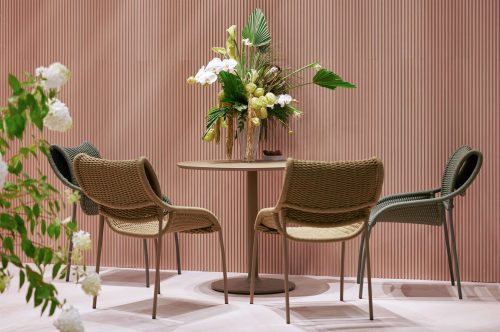
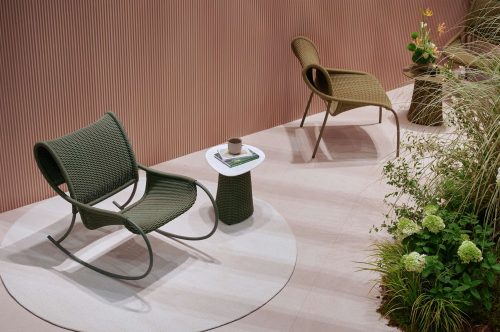
What were the challenges?
Zeng Jinghua: As you can see, the outline is simple. We have this made with aluminum tubes, and we put some solid stainless steel into the aluminum tubes. But if you look at other dining chairs, you will see a structure (going horizontally across the back) to strengthen the chair. But here, in order to keep the simplicity of the outline, there isn’t any. It’s just the ropes. We use two kinds of ropes with different hardness levels.
A chair should offer some strength to support the body weight and, at the same time, have some flexibility. The rattan provides strength to the chair, and the other rope brings flexibility.
Is the collection out already? Or is this a preview?
JC: In China, this is actually the official launch. But we’ll only start taking orders probably in July. Right now, people can give us feedback and express their intention to buy, and we’re going to do some analysis on it and produce the first batch based on the feedback from the market and the distributors.
We’ve been hearing a lot of talks about AI in design. Do you see Livintwist using AI for its product design in the future?
JC: Probably not product design, but definitely, AI is going to help. From the company’s point of view, we can use AI to give us ideas, maybe exhibition plans, because it’s faster to get a rendering from AI. If using AI can give us 20 options within an hour, then I think it’s a good way to get some inspiration. But just the idea, because I don’t think we can get exactly what we want. Product design has a lot to do with emotions and comfort. They can design a very cool chair, but I don’t think they are wise enough to think about these practical points.
Zeng Jinghua: I think the biggest difference between AI and human beings is that humans have memories and emotions. So what touches me will be shown in my sketches. AI can’t be touched by things. Maybe AI could assist designers in offering more choices or references, but the original idea would still come from the designers themselves. Like this collection, every detail is connected to my personal memories and feelings.
JC: I believe that designers, musicians, artists—their work is like an extension of themselves or their self-expression. So it’s something quite personal as well, and AI can’t actually feel anything.
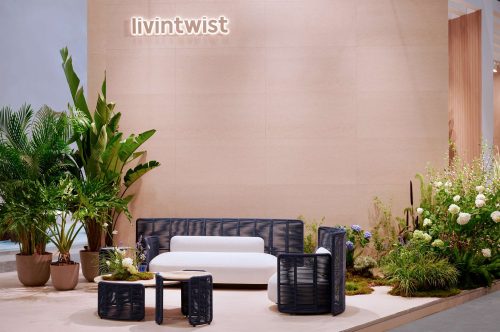
What other new products do you have now other than the “Apsaras”?
JC: We are also introducing two other collections here, also brand new, by Frank Chou. One of them is at the front, called the “Space”, and the other is the “Sketch”. So these are the three new collections from Livintwist.
Other than that, with the older collections, we actually made an improvement with the colors. Back then, we only used plain color yarns to make our ropes. Now, if you look closely, there are mixed colors. It’s minor improvements, minor changes, and 99% of the people won’t even notice it. But for us, it’s important. Sometimes it’s all about the details, right?
When people can buy our products, there will be copies. And copies can catch the shape, but never the soul. I believe when you use a product for a long time, one day, you’d notice small details in the product, and that would really surprise you.
What else would you like people to know about Livintwist and this booth?
JC: We want to show what we’re good at. It doesn’t mean that everybody has to do it the same way—but I believe what we’ve done here this year brings up the standards of what an outdoor furniture company can do in an exhibition. I’m not saying that we’re better than others, but I’m just saying that there can be many different ways of doing things. There’s no harm in doing things a little differently.
A special thing about this year’s booth, the floor and the walls will be recycled for the next exhibition. The walls here are wood veneer attached to plywood, and we use no glue on the walls and the flooring.
We’re trying to be greener. Can’t do 100%, but it’s something we keep improving. There were so many challenges; contractors kept telling us that certain things were impossible. But (Zeng Jinghua) kept insisting on trying, and it worked really well. We’ll make minor improvements for the next exhibitions, but overall it should be pretty much the same for the next two or even three years. It would be such a waste to throw all of this away just after three days.
